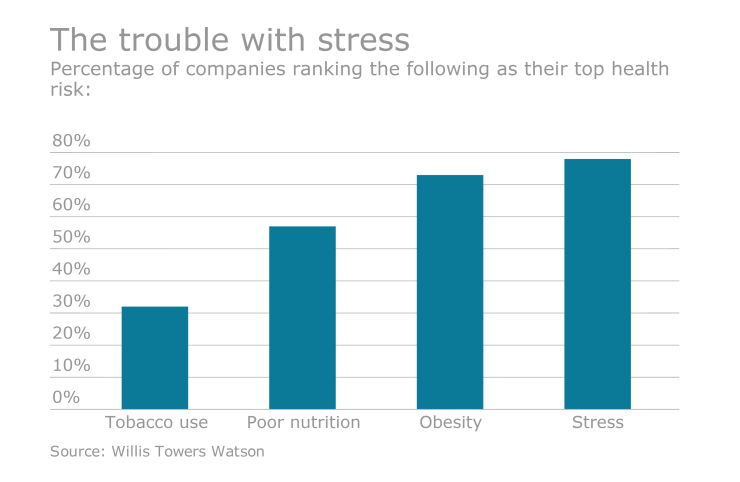The Willis Towers Watson

Natalie Nibler is an EAP clinical consultant at ACI Specialty Benefits. She spoke to EBN about why employers need to better understand the sources of workplace stress, the effects of employee stress on the work environment and the value of EAPs.
EBN: What does the term ‘employee burnout’ mean to you?
Nibler: To me employee burnout is when an individual who at one time was engaged, and enjoyed her job, suddenly dreads going to work, counts down the minutes left to the end of the day, and generally is just drained.
EBN: How can employers recognize burnout?
Nibler: I think they can recognize burnout by understanding what is going on in the employee’s life and whether it explains changes in their work performance. Direct managers should make it clear that without giving up their privacy, there door is always open so employees can keep them informed. That way a resulting drop in productivity may not necessarily be reflected in their next performance review.
EBN: What are the causes of workplace burnout?
Nibler: In some cases it could be a spillover from stressors in their home life. There may also be changes in workplace culture if a supportive manager leaves or an employee no longer feels fulfilled in her job because she realizes she has other needs that are not being met.
EBN: Why is it important for employers to identify employee burnout and do something about it?
Nibler: My response as a therapist is that happy employees are highly productive. From a broader employer perspective, the more talented employees an organization can keep satisfied and doing well in their positions, the less it has to pay to find and train new ones.
EBN: Apart from productivity and attraction and retention costs, what other impact can burnout have on a company?
Nibler: If there are groups of individuals working together, one or more disgruntled employees suffering from burnout can really impact the overall dynamics and morale of the group.
EBN: What can employers do about workplace burnout, particularly when they see signs in more than one employee?
Nibler: If an employer is seeing signs of burnout from more than one employee, the company should consider doing an employee engagement and satisfaction survey to find out the sources of dissatisfaction and how the work environment can be improved.
If we give employees outlets where they can provide feedback and feel as though they are being heard, then they no longer have to ruminate on the things that are bothering them. And some things can be easily fixed with little or no cost to the company.
EBN: How can EAPs help employers and managers?
Nibler: I may be a little biased working with an EAP, but I believe EAPs are a really great resource for helping managers and employers deal with workplace burnout because we are a free resource for employees. In addition to individual counseling for employees and their families, we can also do internal training sessions for management on stress management and creating a respectful workplace.
EBN: What is typical EAP utilization in an organization?
Nibler: I believe nationally the numbers are less than 5% for EAPs. I think they should be higher. For our clients the range is about 8% to 12% of the workforce each year.
EBN: What are some of the reasons employees don’t use EAPs?
Nibler: Concern about confidentiality is a big one. Employees I work with have told me stories about how their personal information has not always been protected. I also think there is a stigma about EAP use. The EAP is viewed as this thing that you call or use if you're in trouble. When in all reality it really is just a tool. You don’t have to hate your life or be suicidal to benefit from the service. The perception of the purpose of the EAP has to change over time from a resource only for troubled employees to a program for employees who just want to better thrive.
EBN: Are there any particular EAP designs that are considered best practices or that will facilitate higher utilization?
Nibler: I think it is important for EAP staff taking phone calls to be trained to recognize certain key words like ‘financial stress’ and look beyond the obvious issue the employee presents to see if there is another underlying problem.
I recall one employee who was suddenly regularly late for work. It turns out his car broke down and he couldn’t afford to fix it. We couldn’t pay to fix the car but we were able to connect the employee with more cost-effective local resources.
EBN: How important is it for the employer to really communicate the different components of EAP support?
Nibler: It is imperative. I’ve taken calls from people involved in a stressful divorce who are not aware their EAP includes a free legal consultation. They aren’t aware of our financial coaching services.
Employers need to use a variety of user-friendly methods of communication like posters, pamphlets, post cards sent to employees at home, payroll stuffers and emails. This is a great, free benefit and employees need to understand this so they will take advantage of the program in their time of need.





